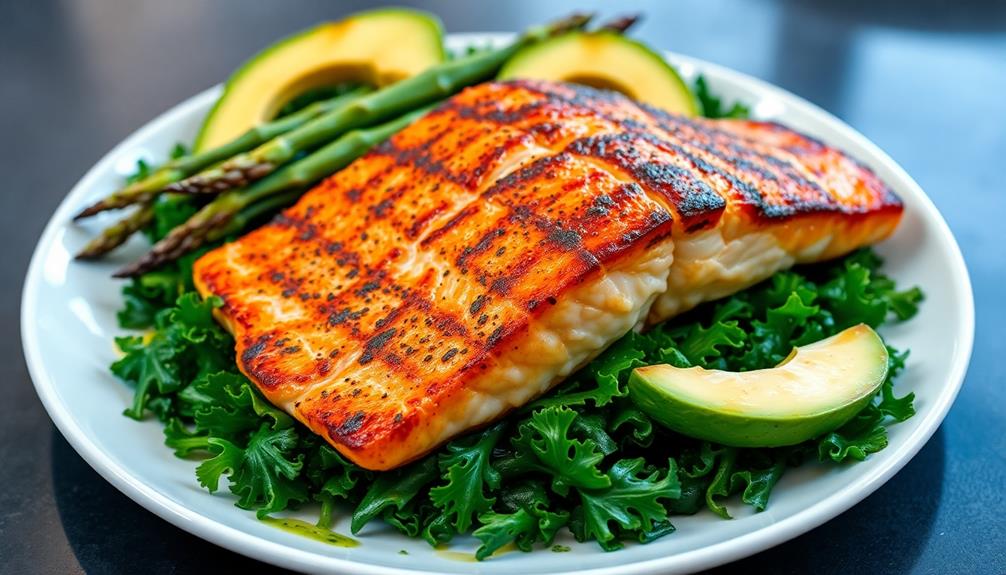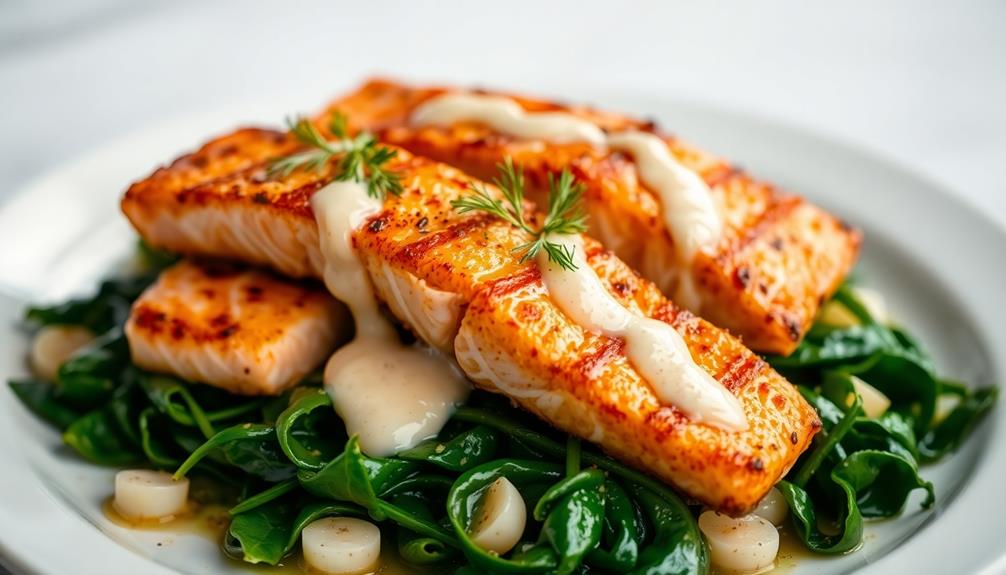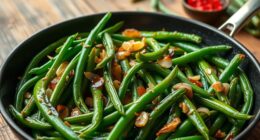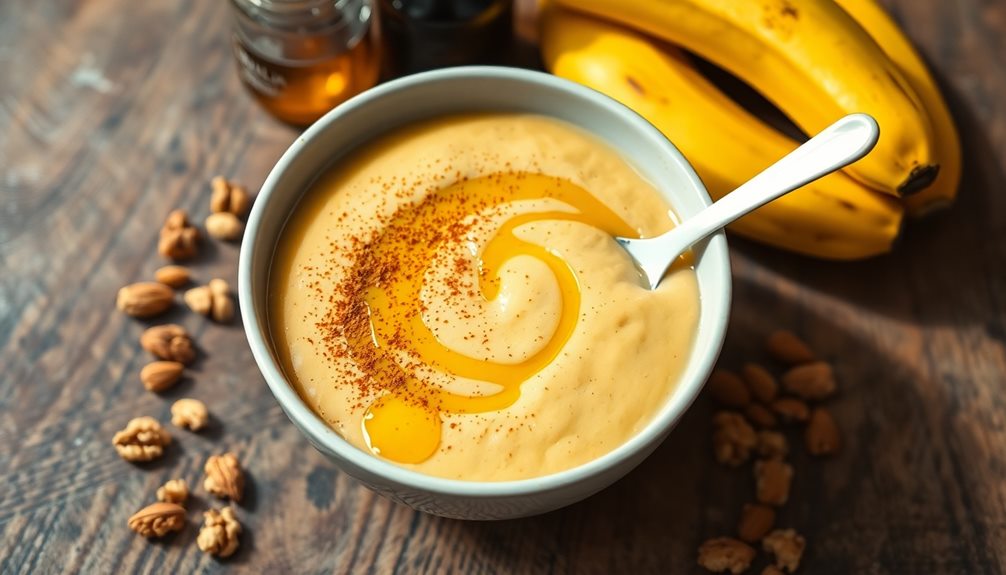Struggling with keto flu symptoms? Don't worry – proper electrolyte balance is key to feeling great on the keto diet. Make sure you're getting plenty of sodium, potassium, and magnesium from electrolyte-rich foods like avocados, spinach, and nuts. Supplement if needed, but avoid too much – electrolyte levels need to stay just right. Stay hydrated and adjust your intake based on your activity level and symptoms. With some simple strategies, you can overcome keto flu and thrive on this high-fat, low-carb way of eating. And to really dial in your electrolyte game…
Key Takeaways
- Maintain electrolyte balance, especially sodium, potassium, and magnesium, to prevent symptoms of "keto flu" like fatigue, headaches, and muscle cramps.
- Incorporate electrolyte-rich foods like avocados, spinach, nuts, and seeds into the ketogenic diet to support overall health and bodily functions.
- Gradually transition to a ketogenic diet and stay hydrated to help the body adapt and regulate electrolyte levels.
- Monitor symptoms and adjust electrolyte intake as needed, seeking professional guidance if required.
- Prepare electrolyte-rich smoothies and meals using ingredients like pink Himalayan salt, collagen powder, bone broth, and lemon juice or apple cider vinegar.
History
On the topic of electrolyte balance on the keto diet, let's dive into the history. The keto diet isn't new – it's actually been around for nearly a century.
Back in the 1920s, doctors began using the high-fat, low-carb approach to treat epilepsy in children. They found that putting the body in a state of ketosis, where it burns fat for fuel instead of carbs, could significantly reduce seizures.
Over the years, as the popularity of high-fat diets has surged, many have begun to explore the health benefits of natural fats in various contexts, including the butter industry.
But one thing that's consistently come up is the importance of maintaining proper electrolyte levels. When you restrict carbs, your body flushes out a lot of water and electrolytes like sodium, potassium, and magnesium.
This can lead to the dreaded "keto flu" – symptoms like fatigue, headaches, and muscle cramps. Learning how to balance your electrolytes is key to feeling your best on the keto diet.
Recipe
Maintaining electrolyte balance is crucial when following a ketogenic diet, especially since electrolyte imbalances can lead to symptoms commonly referred to as "keto flu." To prevent keto flu, it is important to focus on consuming adequate amounts of sodium, potassium, and magnesium. This can be achieved by including foods rich in these electrolytes, such as leafy green vegetables, nuts, seeds, and seafood, in the ketogenic diet. Additionally, staying well-hydrated and possibly even supplementing with electrolyte tablets can also help in preventing keto flu. Ensuring electrolyte balance on keto is crucial for overall health and well-being. Electrolytes are essential for various bodily functions, including nerve function, muscle contraction, and maintaining proper fluid balance. Therefore, prioritizing the intake of these essential minerals is key for avoiding potential side effects of the ketogenic diet. By paying attention to electrolyte balance on keto, individuals can better manage symptoms and optimize their experience on the diet. Overall, being mindful of electrolytes can contribute to a successful and sustainable ketogenic diet journey.
A well-rounded approach to health, including effective strategies for weight loss, emphasizes the importance of nutrient intake during dietary transitions. One way to ensure you're getting the necessary electrolytes is through homemade electrolyte-rich recipes.
This recipe for a refreshing electrolyte-packed smoothie is a great way to replenish your body's minerals.
This smoothie combines the hydrating properties of coconut water with the electrolyte-rich ingredients of avocado, spinach, and salt. It's a delicious and easy way to help keep your electrolyte levels in check while on a keto diet.
Ingredients:
- 1 cup coconut water
- 1/2 avocado
- 1 cup spinach
- 1/4 teaspoon salt
Instructions:
Combine all the ingredients in a blender and blend until smooth and creamy. Enjoy immediately for a boost of essential electrolytes.
Remember to adjust the salt content to your personal taste preferences. You can also experiment with adding other keto-friendly ingredients like chia seeds or lemon juice to further enhance the nutritional profile and flavor of this smoothie.
Cooking Steps
Add a pinch of pink Himalayan salt to your keto-friendly beverage for essential electrolytes.
Stir in a scoop of collagen powder and a few ounces of bone broth for an extra nutrient boost.
Finish with a squeeze of lemon juice or a splash of apple cider vinegar to balance the flavors.
Step 1. Add Pink Himalayan Salt

When it comes to adding Pink Himalayan salt during your keto cooking, you'll want to do so with a bit of care. This type of salt is known for its rich mineral content, which can help replenish the electrolytes you may lose on the keto diet, similar to how certain herbal teas can support electrolyte balance and overall wellness popular herbal teas.
However, it's important not to overdo it, as too much salt can lead to its own set of problems.
To get the right balance, start by adding a small amount of Pink Himalayan salt to your meals, perhaps a quarter to a half teaspoon. Taste your food and see how it affects the flavor. You can always add more if needed, but it's harder to fix a dish that's become too salty.
Be especially mindful when cooking with salty ingredients like soy sauce or broth, as the Pink Himalayan salt can amplify the saltiness.
Pay attention to how your body responds to the added salt, and adjust your intake accordingly. With a little experimentation, you can find the sweet spot that keeps your electrolytes in check without overdoing it on the sodium.
Step 2. Add Collagen Powder
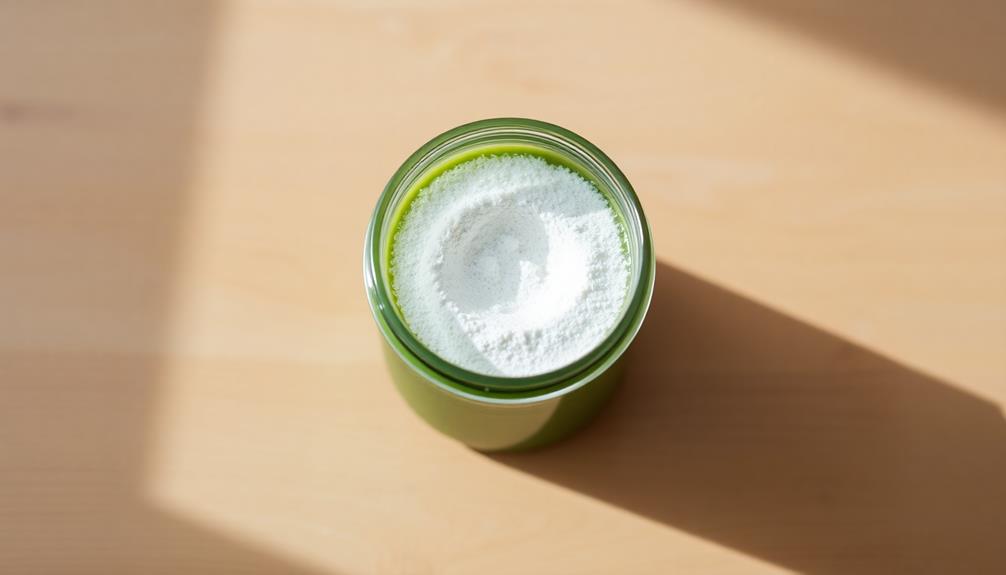
Collagen powder can be a fantastic addition to your keto cooking repertoire.
It's a versatile ingredient that packs a nutritional punch, supporting joint health, skin elasticity, and hair and nail strength. When you add collagen powder to your dishes, you'll enjoy a boost of protein without altering the flavor or texture too much.
You can stir collagen powder into soups, stews, and sauces to thicken them up and increase the nutritional value.
It also works well in smoothies, providing a creamy, frothy texture. For baked goods, simply incorporate a scoop or two of collagen powder into your keto-friendly recipes for muffins, cookies, or bread.
The powder will seamlessly blend in, delivering an extra dose of beneficial amino acids.
Step 3. Add Bone Broth
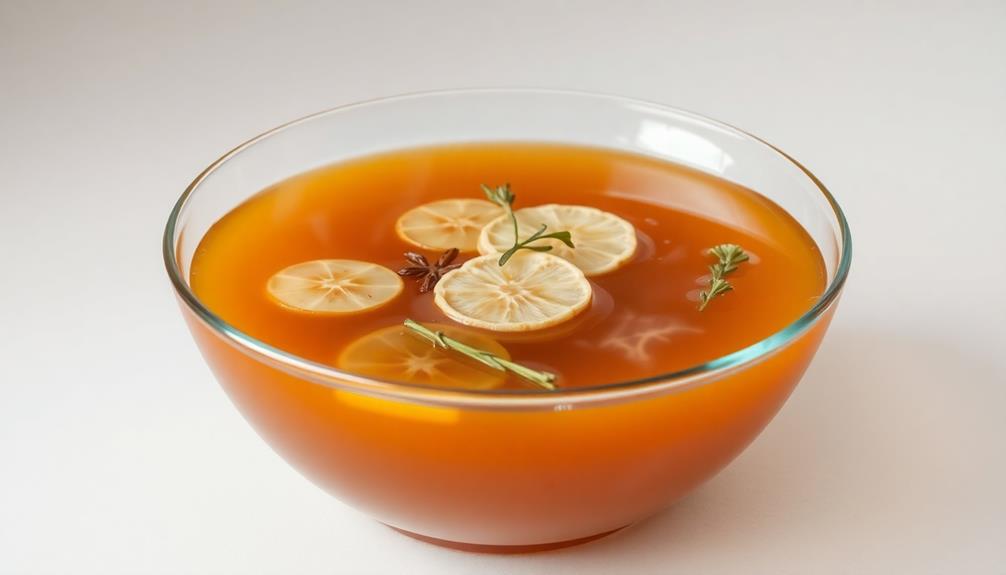
Though bone broth is a fantastic way to boost your electrolyte intake on a keto diet, it's important to note that the preparation process takes some time.
To make bone broth, you'll need to simmer bones, such as from chicken or beef, for several hours. This allows the minerals and nutrients to be extracted from the bones, creating a flavorful and nutrient-dense broth.
Start by placing the bones in a large pot and covering them with water. Bring the mixture to a boil, then reduce the heat and let it simmer for 6-24 hours, depending on the type of bones used. You can also add in aromatic vegetables like onions, carrots, and celery to enhance the flavor.
As the broth simmers, skim off any foam or impurities that rise to the surface.
Once the broth is ready, strain it through a fine mesh sieve to remove the solids. You can then enjoy the bone broth on its own or use it as a base for soups, stews, or other keto-friendly recipes.
Step 4. Add Lemon Juice or Apple Cider Vinegar
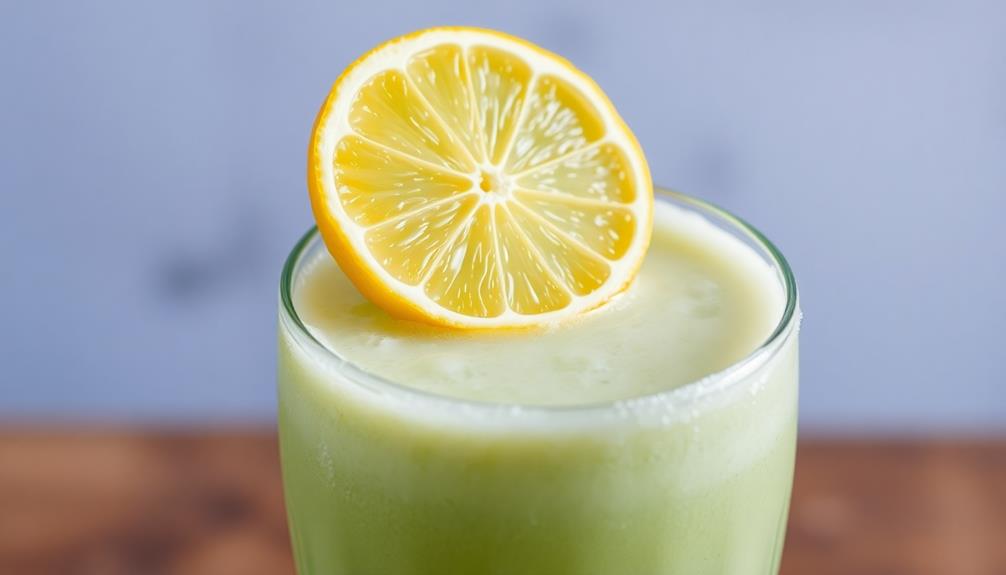
In addition to bone broth, you can also boost your electrolyte intake on a keto diet by adding a splash of lemon juice or apple cider vinegar to your meals.
Both of these ingredients are rich in vital electrolytes like potassium, magnesium, and sodium, which can help alleviate the symptoms of the "keto flu" that some people experience when first starting a low-carb diet.
Adding a squeeze of fresh lemon juice or a tablespoon of apple cider vinegar to your water, tea, or even salad dressings and marinades can provide a handy electrolyte boost.
The tart flavors also help balance the richness of many keto-friendly foods. Plus, the acidity in these ingredients may even aid digestion and support gut health.
Remember to start with small amounts and work your way up to find the right balance for your taste buds and electrolyte needs.
Incorporating lemon juice and apple cider vinegar is an easy, affordable way to support your body's electrolyte levels on the keto diet.
Step 5. Stir Mixture Thoroughly Before Serving
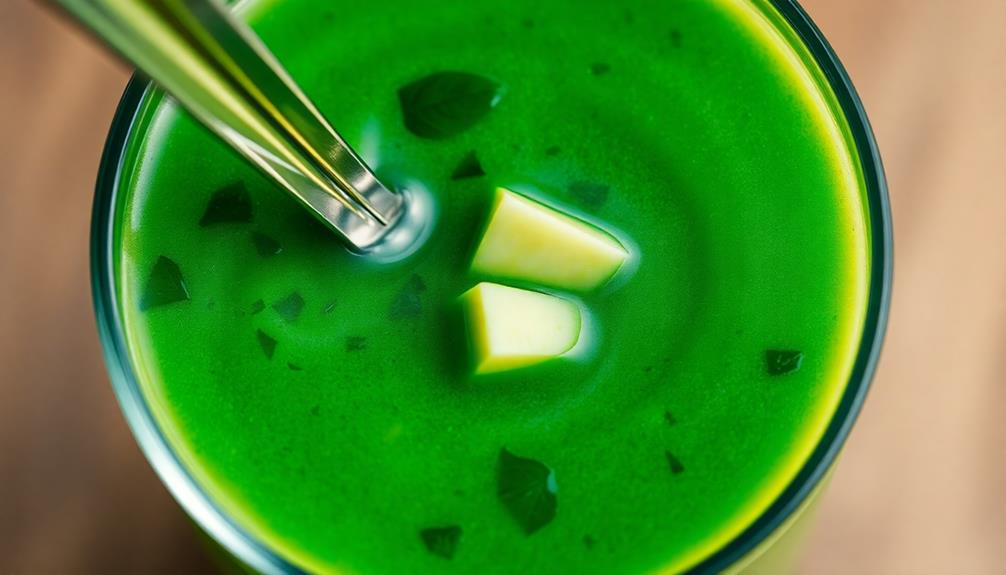
Before serving your electrolyte-boosting concoction, be sure to give it a thorough stir. This step is crucial to ensure the ingredients are evenly distributed, so you get the full benefits in every sip.
Stirring mixes the lemon juice or apple cider vinegar with the water, salt, and any other additions, creating a harmonious blend of flavors and electrolytes.
Don't be tempted to skip this part – a quick stir is all it takes. Spend 30 seconds giving the mixture a good whisk or a few vigorous stirs with a spoon.
This simple action helps the solution taste its best and work its magic. The electrolytes will be evenly suspended, allowing your body to absorb them efficiently.
Taking the time to stir thoroughly means you'll get the most out of your homemade electrolyte drink, keeping pesky keto flu symptoms at bay.
Final Thoughts
Maintaining a proper electrolyte balance is crucial for individuals following a ketogenic diet. When you're in ketosis, your body flushes out more electrolytes like sodium, potassium, and magnesium.
If you don't replace them, you might experience the dreaded "keto flu" with symptoms like headaches, fatigue, and muscle cramps.
To prevent this, be sure to eat plenty of electrolyte-rich foods like avocados, spinach, nuts, and seeds. You can also supplement with electrolyte powders or tablets.
Just don't go overboard – too much of a good thing can also cause issues. Listen to your body and adjust your intake as needed.
Frequently Asked Questions
How Do I Know if I'm Experiencing the Keto Flu?
You'll know you're experiencing the keto flu if you feel fatigued, have headaches, muscle cramps, and difficulty concentrating. These symptoms often indicate an electrolyte imbalance, so be sure to replenish your electrolytes during this transition.
What Are the Signs of Electrolyte Imbalance on Keto?
You may experience signs of electrolyte imbalance on keto, such as fatigue, muscle cramps, headaches, dizziness, and heart palpitations. These symptoms indicate your body needs more electrolytes like sodium, potassium, and magnesium to maintain proper fluid balance.
Which Electrolytes Are Most Important to Supplement on Keto?
When following a keto diet, the key electrolytes you'll want to supplement are sodium, potassium, and magnesium. These electrolytes can easily become depleted, leading to symptoms like fatigue, headaches, and muscle cramps.
How Can I Prevent the Keto Flu?
To prevent the keto flu, you should focus on replenishing your electrolytes like sodium, potassium, and magnesium. Drink plenty of water, eat electrolyte-rich foods, and consider taking supplements to maintain proper electrolyte balance.
What Are the Long-Term Effects of Electrolyte Imbalance on Keto?
An electrolyte imbalance while on keto can lead to long-term issues like muscle cramps, fatigue, and irregular heart rhythms. Ensure you're getting enough sodium, potassium, and magnesium to avoid these complications and maintain optimal health on your low-carb diet.




